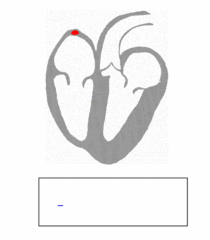 Elevated levels of low density lipoprotein (LDL), “bad cholesterol”, is not an accurate indicator of coronary disease: new research at Ohio University shows that a particular subclass of LDL is a much better predictor of potential heart attacks.
Elevated levels of low density lipoprotein (LDL), “bad cholesterol”, is not an accurate indicator of coronary disease: new research at Ohio University shows that a particular subclass of LDL is a much better predictor of potential heart attacks.
LDL is comprised of three subclasses, with particles of different size and density.
The presence of LDL is considered an indicator for the potential risk of heart attacks or coronary disease, but studies have shown that about 75 percent of patients who suffer heart attacks have cholesterol levels that don’t indicate a high risk for such an event.
Research by Ohio University Distinguished Professor Dr. Tadeusz Malinski and researcher Dr. Jiangzhou Hua in Ohio University’s Nanomedical Research Laboratory shows “why a correlation of total bad cholesterol with a risk of heart attack is poor and dangerously misleading – it’s wrong three quarters of the time”, Malinski said.
“These national guidelines may seriously underestimate the noxious effects of LDL cholesterol, especially in cases where the content of subclass B in total LDL is high (50% or higher).”
Subclass B of “bad cholesterol” is the most damaging to endothelial function and can contribute to the development of atherosclerosis.
Contrary to the current national guidelines, this study suggests that it’s not the total LDL, rather it is the concentration of subclass B in relation to subclasses A and/or I, that should be used for diagnosis of atherosclerosis and the risk of heart attack.
Malinski’s team used nanosensors to measure the concentration of nitric oxide and peroxynitrite in endothelium stimulated by LDL subclasses and reported the findings in a study published in the International Journal of Nanomedicine.
For more information
International Journal of Nanomedicine
Variable Effects Of LDL Subclasses Of Cholesterol On Endothelial Nitric Oxide/Peroxynitrite Balance – The Risks And Clinical Implications For Cardiovascular Disease
Link…
College of Arts and Sciences
Link…
MDN
This post is also available in:
 Italian
Italian


